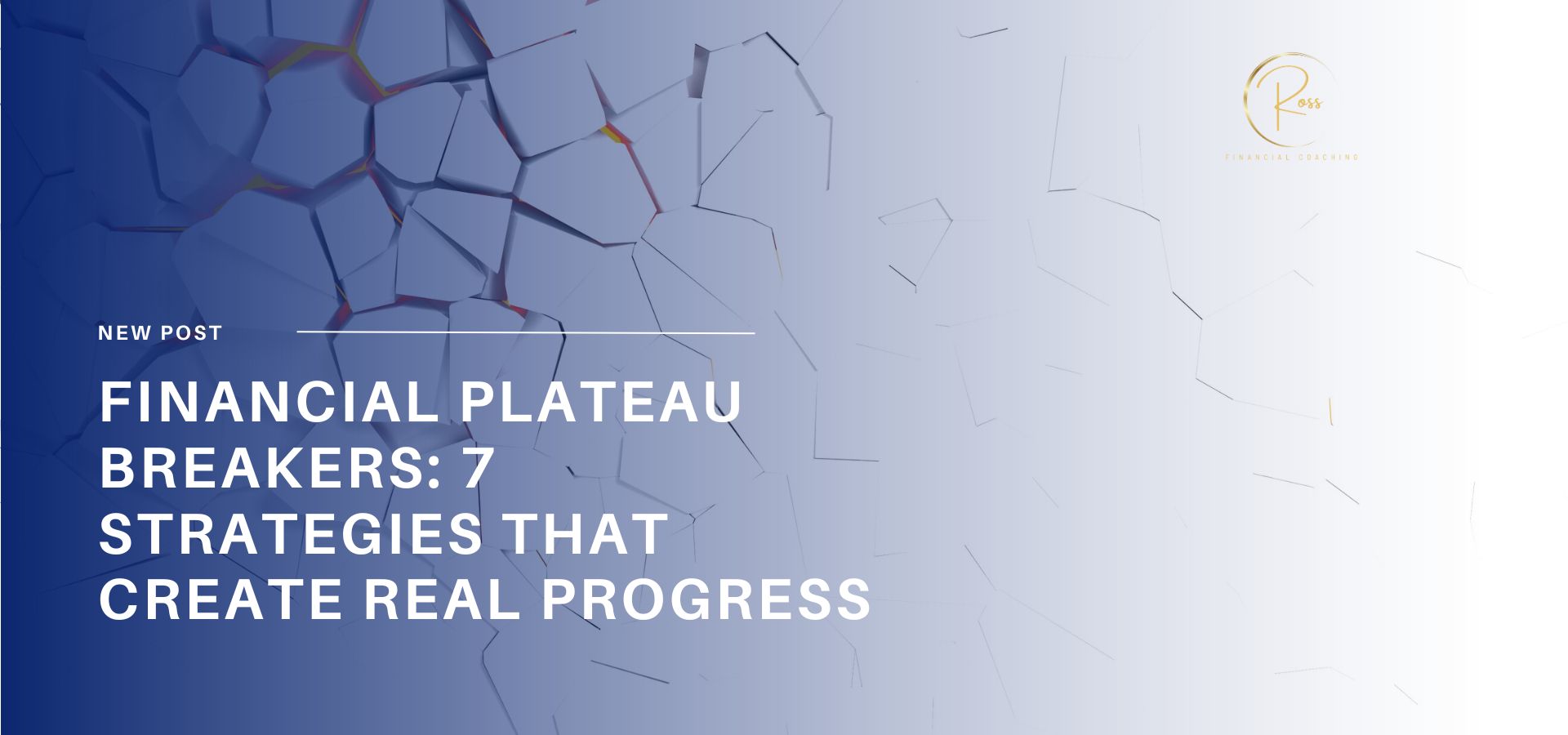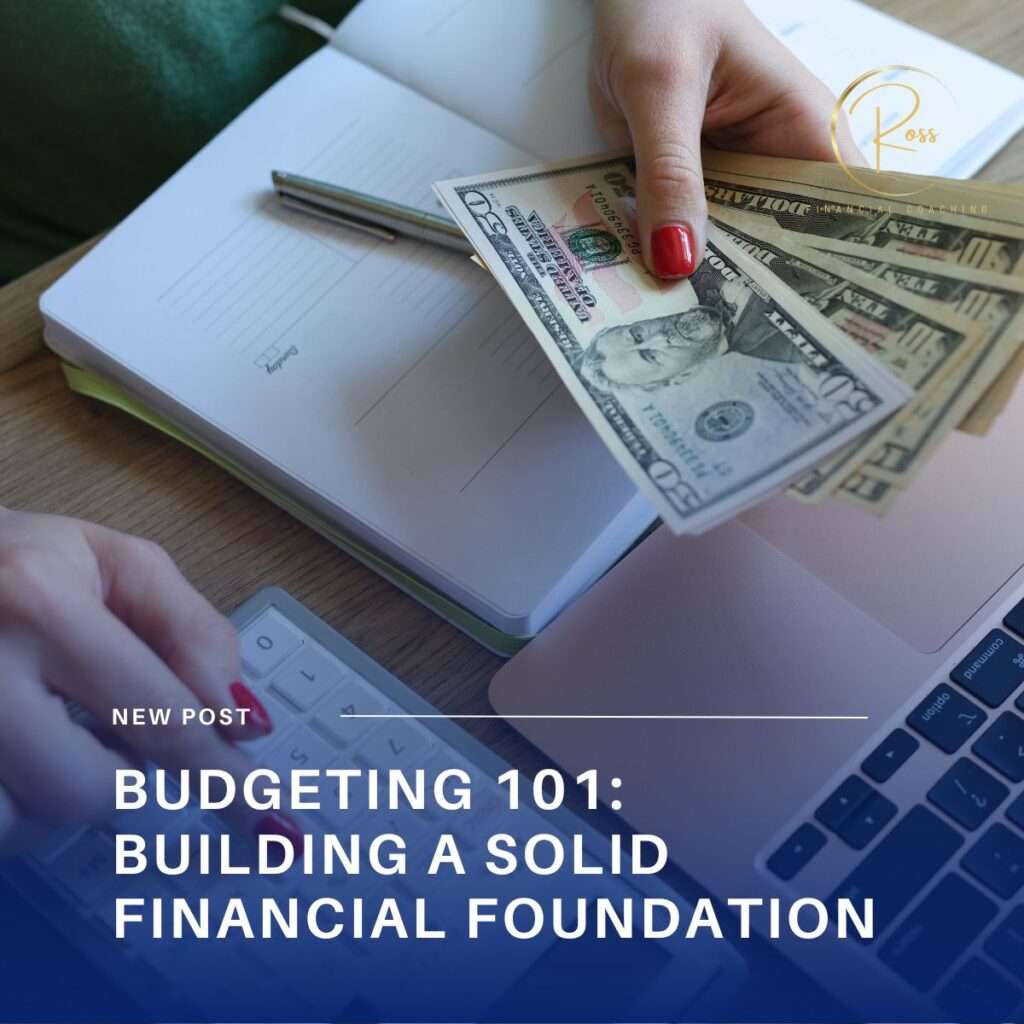
Reading Time: 10 minutes
It’s one of the most frustrating moments in your financial journey. After months of steady progress – watching your savings grow, seeing your debt shrink, feeling that momentum build – everything just… stops.
Your net worth flatlines. Your debt payoff stalls. Your savings rate hits a ceiling. You’re doing all the same things that worked before, but suddenly they’re not working anymore.
Welcome to the financial plateau – that frustrating middle ground where your initial strategies have taken you as far as they can, but you haven’t yet discovered how to break through to the next level.
Why Financial Plateaus Happen
Financial plateaus aren’t a sign of failure – they’re actually a natural part of progress. They happen for several key reasons:
1. Initial Strategies Reach Their Limit
The approaches that work in the beginning of your financial journey – basic budgeting, cutting obvious expenses, starting to save – naturally reach a point of diminishing returns.
2. Your Financial Metabolism Adjusts
Just as your body adapts to a fitness routine, your financial life adapts to your management approach. What once created momentum eventually becomes your new baseline.
3. Life Complexity Increases
As your finances grow, so does their complexity. The simple systems that worked initially aren’t designed for more sophisticated financial situations.
4. You’ve Picked the Low-Hanging Fruit
The obvious improvements have been made, leaving only the more challenging or complex changes unaddressed.
The good news? Every financial plateau contains the seeds of your next breakthrough – if you know how to find them.

The 7 Most Powerful Plateau-Breaking Strategies
Let’s explore the specific approaches that can create new momentum when your financial progress stalls:
1. The Income Accelerator
When to use it: You’ve optimized your spending but still feel financially constrained.
The approach: Shift your focus from saving pennies to earning dollars. This means:
- Positioning yourself for a significant promotion or raise
- Developing a high-value skill that commands premium compensation
- Creating a strategic side income aligned with your expertise
- Building valuable networks that create income opportunities
The breakthrough difference: A 15-20% income increase creates more financial impact than years of expense optimization. Even a $500 monthly income increase outperforms most budget-cutting efforts.
Implementation step: Identify one high-value skill in your field that consistently commands higher compensation. Create a 60-day plan to develop and showcase this skill.
2. The Investment Intensifier
When to use it: Your savings are growing steadily but your overall net worth isn’t accelerating.
The approach: Move beyond basic saving to strategic investing by:
- Increasing your investment allocation in existing accounts
- Diversifying across additional asset classes
- Optimizing tax-advantaged investment vehicles
- Building income-producing assets
The breakthrough difference: The gap between a 1% return and a 7% return on your money becomes exponentially more significant as your assets grow. On $50,000, that’s the difference between $500 and $3,500 annually.
Implementation step: Review your current investments and identify areas where money might be sitting in low-return accounts that could be strategically reallocated.
3. The System Upgrade
When to use it: Your financial management approach feels increasingly complex and time-consuming.
The approach: Replace ad-hoc financial management with systematic approaches:
- Create automated money flow systems
- Develop decision frameworks for recurring financial choices
- Build review protocols that focus on key metrics
- Implement professional-grade tracking tools
The breakthrough difference: Systematic approaches scale with complexity while requiring less time and mental energy. They also reveal patterns and opportunities that manual management misses.
Implementation step: Identify one financial decision you make repeatedly (like debt payment allocation or spending choices) and create a simple decision framework to guide future choices.
4. The Focus Flip
When to use it: You’ve made progress in one financial area but others are neglected.
The approach: Strategically shift your primary focus to create balanced progress:
- Move from debt-elimination to wealth-building
- Transition from saving to strategic investing
- Shift from expense management to income growth
- Change from financial security to financial opportunity
The breakthrough difference: Just as cross-training breaks fitness plateaus, changing your financial focus activates different “muscles” and creates new momentum.
Implementation step: If you’ve focused primarily on debt reduction, allocate a specific portion of your financial attention and resources to building assets, even while continuing debt payments.
5. The Leverage Leap
When to use it: Your financial progress feels linear and slow despite consistent effort.
The approach: Introduce strategic leverage to accelerate results:
- Use financing for carefully selected appreciating assets
- Leverage other people’s time through delegation or outsourcing
- Apply technology to automate or enhance financial activities
- Utilize tax strategies to multiply your effective saving or investing
The breakthrough difference: Leverage turns linear progress into exponential growth when applied strategically and responsibly.
Implementation step: Identify one area where spending money could save time that could be used for higher-value financial activities, like outsourcing basic tasks to focus on career advancement.
6. The Knowledge Multiplier
When to use it: You sense missed opportunities but aren’t sure what they are.
The approach: Strategically expand your financial knowledge into specific areas:
- Tax optimization strategies
- Investment alternatives beyond basic offerings
- Specialized retirement planning approaches
- Advanced income-building methods in your field
The breakthrough difference: Specialized knowledge creates opportunities invisible to others. Often, a single tax strategy or investment approach can create breakthrough results.
Implementation step: Identify the next major financial decision you’ll face (buying property, career change, investment allocation) and dedicate focused learning time to that specific area.
7. The Environment Evolution
When to use it: Your progress stalls because your surroundings don’t support next-level growth.
The approach: Strategically reshape your financial environment:
- Upgrade your professional and financial peer group
- Change advisors or mentors to those with next-level expertise
- Join masterminds or communities that normalize higher achievement
- Restructure your information sources for more sophisticated insights
The breakthrough difference: Your environment often sets invisible ceilings on your progress. New environments normalize new levels of achievement.
Implementation step: Identify one relationship, community, or information source that would expose you to next-level financial thinking, and commit to engaging with it regularly.
Creating Your Plateau-Breaking Plan
Ready to break through your current financial ceiling? Here’s how to create momentum:
1. Diagnose Your Specific Plateau
The key is identifying exactly where you’ve stalled:
- Is your savings rate stuck at a certain percentage?
- Has your debt payoff progress slowed or stopped?
- Has your income hit a ceiling despite strong performance?
- Are your investments yielding diminishing returns?
Pinpoint the specific numbers that aren’t moving to identify your true plateau.
2. Select the Right Strategy
Review the seven plateau-breaking approaches and identify which one most directly addresses your stuck point. The right strategy will feel slightly uncomfortable but energizing.
3. Start With One Strategic Shift
Resist the urge to change everything at once. Select the single most powerful shift and implement it fully before adding others.
4. Set New Metrics
When you change strategies, you need to change how you measure success. Define what progress looks like with your new approach.
5. Build Breakthrough Momentum
Start small with your new strategy, but build consistency. Small actions with the right strategy create more progress than massive effort with the wrong approach.
Moving Past the Middle Ground
Remember: Financial plateaus aren’t failures – they’re transition points. They signal that you’ve mastered one level and are ready for the next.
The strategies that got you here won’t get you there. And that’s not just okay – it’s exactly how progress is supposed to work.
Your plateau isn’t a problem to solve. It’s an invitation to evolve.
Ready to break through your financial plateau? Let’s create your breakthrough strategy together.


